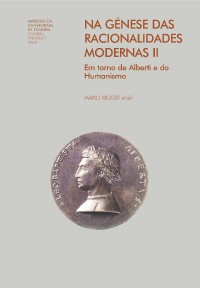Please use this identifier to cite or link to this item:
https://hdl.handle.net/10316.2/36672| DC Field | Value | Language |
|---|---|---|
| dc.contributor.author | Brock, Maurice | |
| dc.date.accessioned | 2015-06-11T08:57:46Z | |
| dc.date.accessioned | 2020-09-09T10:27:10Z | - |
| dc.date.available | 2015-06-11T08:57:46Z | |
| dc.date.available | 2020-09-09T10:27:10Z | - |
| dc.date.issued | 2015 | - |
| dc.identifier.isbn | 978-989-26-1014-6 | |
| dc.identifier.isbn | 978-989-26-1015-3 (PDF) | |
| dc.identifier.uri | https://hdl.handle.net/10316.2/36672 | - |
| dc.description.abstract | Alberti’s De pictura opposes the visible floor and buildings’ dimensions with those related with people’s representation. He believes, indeed, that floor paving stones must have one 'arm' lateral dimension, i.e., equivalent to one-third of the total height of a man. It follows that the width and depth of buildings set on the pavement are determined from the latter: they must be evaluated in number of "arms". On the other hand, the height of the buildings should be, according to Alberti, defined over the full height of a man: either equal to it or to an integer multiple of it. This article suggests, based on two case studies, that theoretical precepts are not reflected in artists’ practices. It appears indeed in these works that floor cobblestones dimensions are generally determined from people’s feet (whereas Alberti rejects the use of foot as a unit of measurement). It is also observed that the height of buildings is rarely an integer multiple of the total height of a man. | eng |
| dc.description.abstract | No De pictura, Alberti contrapõe as dimensões visíveis do pavimento e das edificações àquelas dos personagens. Ele considera, com efeito, que os paralelepípedos do pavimento devem ter laterais medindo um “braço”, ou seja, o equivalente a um terço da altura total do homem. Segue‑‑se que a largura e a profundidade das edificações implantadas no pavimento são determinadas a partir deste último: elas devem ser avaliadas em número de “braços”. Por outro lado, a altura dos edifícios deve, segundo Alberti, ser determinada em relação à altura total do homem: seja equivalente a esta altura, seja um múltiplo inteiro. O presente artigo sugere, na base de dois estudos de caso, que os preceitos do teórico não se encontram refletidos nas práticas dos artistas. Constata‑‑se de fato que, nas obras, as dimensões dos paralelepípedos do pavimento são geralmente determinadas a partir dos pés dos personagens (ao passo que Alberti refuta a utilização do pé como unidade de medida). Observa‑se igualmente que a altura das edificações é raramente um múltiplo inteiro da altura total do homem. | por |
| dc.language.iso | por | - |
| dc.publisher | Imprensa da Universidade de Coimbra | por |
| dc.relation.ispartof | http://hdl.handle.net/10316.2/36661 | por |
| dc.rights | open access | - |
| dc.subject | De Pictura | eng |
| dc.subject | Dimensions | eng |
| dc.subject | Contradition theorie-pratique | eng |
| dc.subject | De Pictura | fre |
| dc.subject | Dimensions | fre |
| dc.subject | Contradition theorie-pratique | fre |
| dc.subject | De Pictura | por |
| dc.subject | Dimensions | por |
| dc.subject | Contradition theorie-pratique | por |
| dc.title | O de pictura e a mensurabilidade das edificações pintadas | por |
| dc.type | bookPart | por |
| uc.publication.firstPage | 183 | - |
| uc.publication.lastPage | 198 | - |
| uc.publication.location | Coimbra | por |
| dc.identifier.doi | 10.14195/978-989-26-1015-3_10 | - |
| uc.publication.section | IV. Espaço e razão | por |
| uc.publication.digCollection | PB | por |
| uc.publication.orderno | 11 | - |
| uc.publication.area | Artes e Humanidades | por |
| uc.publication.bookTitle | Na génese das racionalidades modernas II: em torno de Alberti e do Humanismo | - |
| uc.publication.manifest | https://dl.uc.pt/json/iiif/10316.2/36672/208519/manifest?manifest=/json/iiif/10316.2/36672/208519/manifest | - |
| uc.publication.thumbnail | https://dl.uc.pt/retrieve/11139561 | - |
| uc.publication.parentItemId | 54508 | - |
| uc.itemId | 69734 | - |
| item.grantfulltext | open | - |
| item.fulltext | With Fulltext | - |
| Appears in Collections: | Na génese das racionalidades modernas II: em torno de Alberti e do Humanismo | |
Files in This Item:
| File | Description | Size | Format | |
|---|---|---|---|---|
| o_de_pictura_e_a_mensurabilidade_das_edifica__es_pintadas.pdf | 2.08 MB | Adobe PDF |  |
Items in DSpace are protected by copyright, with all rights reserved, unless otherwise indicated.
